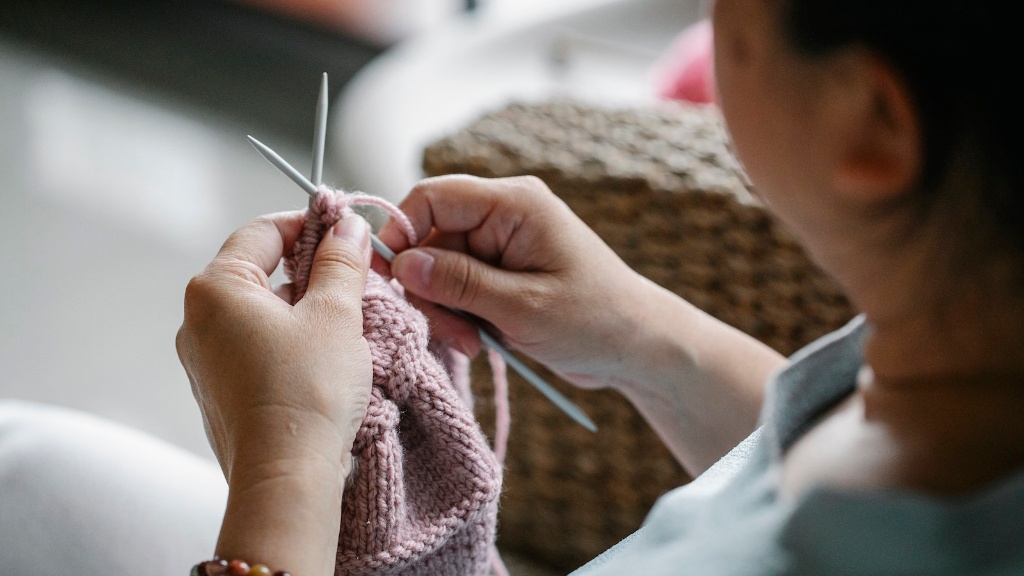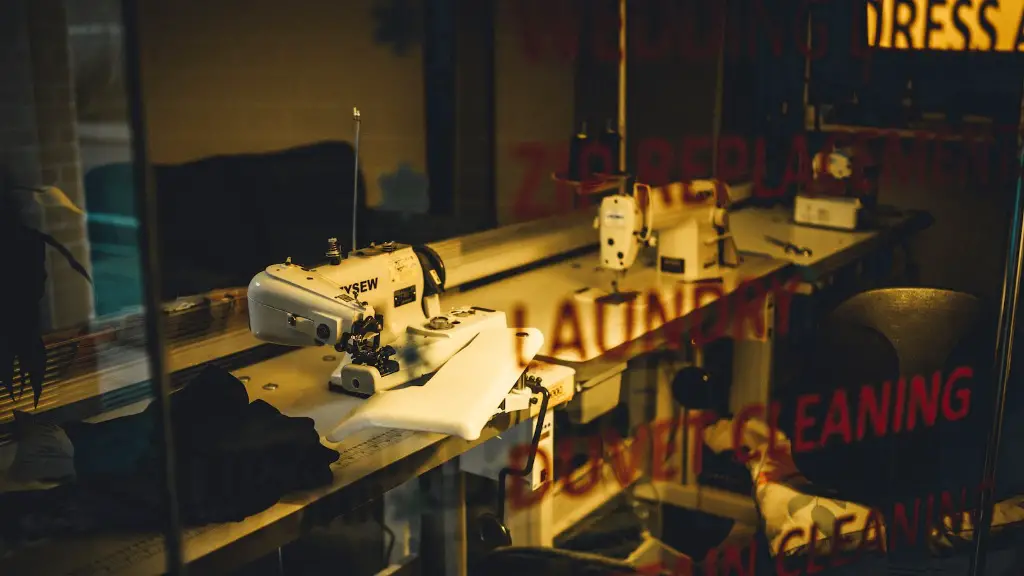Tailoring Flared Jeans Without a Sewing Machine
Flared jeans can be a tricky garment to tailor, especially when there is no sewing machine at hand. Many people opt for expensive alterations, but there are a number of steps that can be taken to shorten them without the need for expensive equipment. While there is no one-size-fits-all solution, with the right materials and know-how anyone can achieve the desired results.
When altering flare jeans without a sewing machine, the first step is acquiring the necessary supplies. The materials needed depend on the amount of fabric being eliminated. A pair of sharp scissors, measuring tape, needle and thread, fusible interfacing, an iron and ironing board, pins, and a seam ripper are all essential elements. Additionally, some form of marking tool, such as tailor’s chalk or a fabric pen, will be required.
The next step is to remove the hem. This process requires the use of a seam ripper, a fairly affordable tool found in most sewing supply stores. Its primary job is to gently remove the stitches separating the two layers of fabric. Care must be taken when using the tool, as forcing it can cause fabric to rip or fray prematurely, so use it with caution.
After the hem has been removed, the flare of the jeans can be altered. First, measure the desired length on the outside of the jeans. It is important to remember that the jeans should fit snugly at the waist, since the hem has been removed, the legs may appear to be slightly too long. Once an ideal length has been determined, place pins at the ankles, or where the desired length is to be. At this point, the jeans can be tried on to make sure the fit is satisfactory.
The pin marks should then be transferred to the inside of the jeans. To ensure accuracy, employ the use of a tailor’s chalk or other form of marking tool. When the marks have been transferred, the excess fabric should be cut away accordingly. It is imperative to use sharp scissors to ensure a clean cut and to reduce the risk of ripping or stretching the fabric.
The last step is to fuse the cut edge of the fabric. Pre-adhesive fusible interfacing can be used for this purpose, but be sure to observe the manufacturer’s instructions for best results. Once the interfacing has been fused, it is essential to determine whether the hem should be re-sewn. If the jeans are long enough without one, it would be best to leave it off, as this will allow for comfort and flexibility. However, if a hem is desired, double-folded bias tape can be used for extra assurance.
Safety Tips for Shortening Flared Jeans
While the process of tailoring flare jeans without a sewing machine may appear daunting and complicated, it can be accomplished with due care and a keen eye for detail. Here are a few safety tips to ensure that the alteration process is as seamless and approachable as possible.
When determining the desired length, always err on the side of caution. It is much easier to shorten flared jeans than to lengthen them, so leave extra fabric if unsure. Additionally, when transferring the pin marks to the inside of the jeans, it is important to double check that they are in the right place, as errors can cause serious issues when the fabric is cut.
Furthermore, when cutting the fabric, make sure that the rulers and other tools being used are in the correct position. When the ruler is in the wrong position, the lines are likely to be misaligned, which could result in an uneven or misshapen hemline. To prevent this, utilize a ruler or tape measure to ensure precision.
Finally, the fusing process is critical in the alteration of flare jeans without a sewing machine. Choosing the wrong lightweight fabric or failing to adhere to manufacturer’s instructions can cause the fusing to fail and fabric shrinkage. To avoid this, be sure to use the right adhesive and select fabric of the appropriate weight.
Common Flared Jeans Alterations Without a Sewing Machine
Tailoring flared jeans requires a certain level of expertise, but with practice and patience, great results can be achieved. In addition to the top hems, there are a handful of other alterations that can be made that don’t require a sewing machine.
Pocket length can be shifted, but it is important to be mindful of their placement. The pockets should be centered and symmetrical to the fly on the pants, as this gives a tailored appearance. Additionally, darts and pleats can be added for an extra streamlined look. To accomplish these, added fabric can be separated from the jeans, pleated and stitched down.
If flared jeans have an uneven hem, a tailored approach can help to even them out. To do this, start by drawing a line down the front of the legs, then use a ruler to measure the same distance from the back side of the legs. At this stage, the extra fabric can be cut away and the hem evened out. Be sure to use sharp scissors to ensure a clean cut and to avoid stretching the fabric.
Flared jeans can also be made to fit more snugly around the waist and crotch without a sewing machine. To do this, the excess fabric must be trimmed in a V shape from the sides of the jeans with scissors or a rotary cutter. This process opens up the waistband and allows for a more comfortable fit.
Raggedy hems can be recovered with the use of webbing, an affordable tool found in most fabric stores. The webbing should be placed over the hems before stitching the seams back together. Additionally, belt loops can be added or removed with basic sewing supplies. All that is needed is a needle, thread, and scissors.
How to Make the Cut
When cutting the fabric of flared jeans without a sewing machine, it is important to utilize the right tools. To prevent fraying and damage to the material, a sharp pair of scissors should be used. Additionally, when cutting the fabric, hold the fabric in one hand while pulling taut with the other. This tension will ensure that the excess fabric is eliminated without creating any unwanted wrinkles or bumps.
When it comes to the hems, it is important to remember to double-fold them, as this will reduce the risk of fraying. Adding a presser foot or a line of stitching to the hem will also provide extra protection and durability. If the hem is too long, simply measure the desired length and cut away the excess fabric, being sure to observe the same cutting methods.
Ironing Tips
When ironing the fabric of flared jeans without a sewing machine, it is important to use a medium heat setting and minimal steam. Using too much heat can cause the fabric to shrink or become stiff, so pay close attention to the fabric’s reaction. Warm, damp fabric can be pressed, but be sure to apply light pressure and never hold the iron in one spot for too long.
Fusible interfacing should also be used with caution, as it can be surprisingly unforgiving. Applying too much heat, pressure, or steam can cause it to become brittle and flake off, so it is best to refer to the manufacturer’s instructions when fusing. Additionally, test a scrap piece of fabric before applying the interfacing to the jeans, as this will provide a better understanding of how the fabric will react.
Hem Alternatives
If desired, the hem of the jeans can be replaced with an alternative method. Double-folded bias tape can be used instead of sewing a new hem, as it is more durable and provides extra protection for the fabric. Additionally, adding a snap closure or Velcro can be a great way to achieve a similar result, as it eliminates the need for a hem altogether.
Another popular alternative is to add a decorative trim. This option works well with fabrics that fray easily, as it provides added protection to the edges. To create a decorative trim, select the desired fabric, cut the edges, turn the fabric inside out, and stitch it along the edges of the jeans.
Finally, a lining can also be added to the hems of the jeans. If the lining is too long, it can be shortened with scissors or a rotary cutter. If a lining is desired, be sure to choose a lightweight fabric that won’t add too much bulk or weight to the jeans.
Additional Tips for Tailoring Flared Jeans
When tailoring without a sewing machine, it is important to take some extra precautions to ensure accuracy and quality. Here are a few additional tips that can help to achieve great results without any costly alterations.
When trimming away fabric from the jeans, make sure that marks are made at the desired length before cutting to reduce the risk of any errors. This will provide a visual guide for the cutting process, allowing for a perfectly tailored outcome. Additionally, low-density fabrics can be challenging to sew, so it is important to invest in a good quality fabric to ensure the best possible results.
Having the right tools is essential. Making sure that the scissors and other cutting tools are sharp and precise will ensure a neat finish. Additionally, it is helpful to have tools that can be used to snip away small amounts of fabric, like nail clippers and tweezers. These tools are perfect for making minor adjustments and final touches.
Finally, practice makes perfect. If unsure about any step or technique, seek advice and direction as needed. Utilizing websites and forums, as well as learning from friends and family, is a great way to become more familiar with the process and improve overall results.





